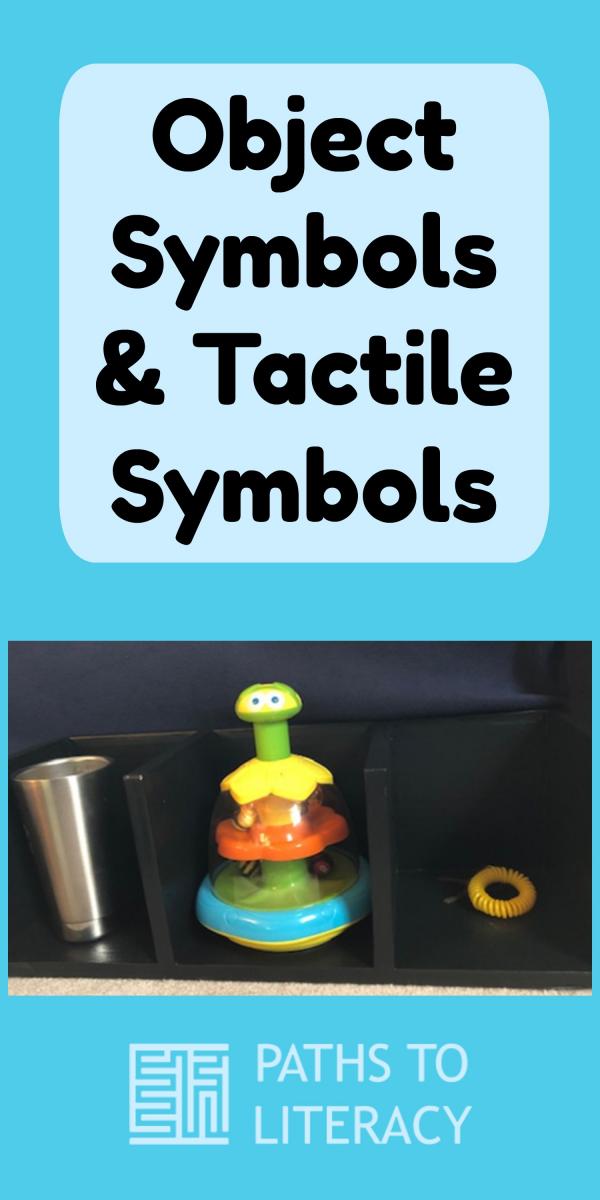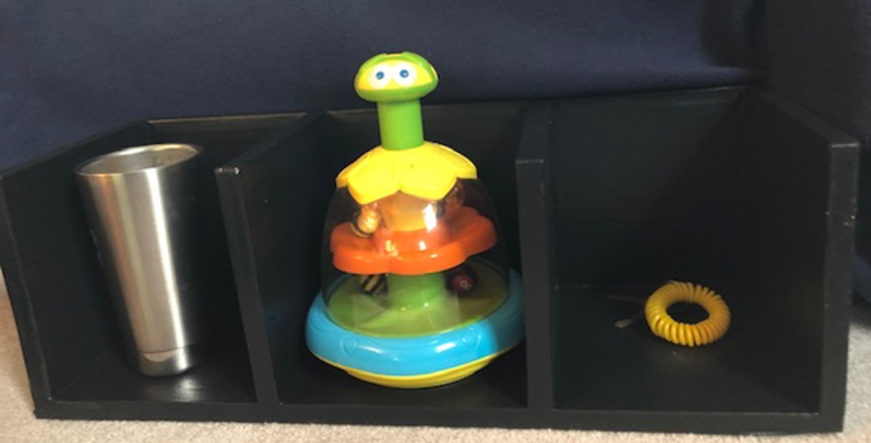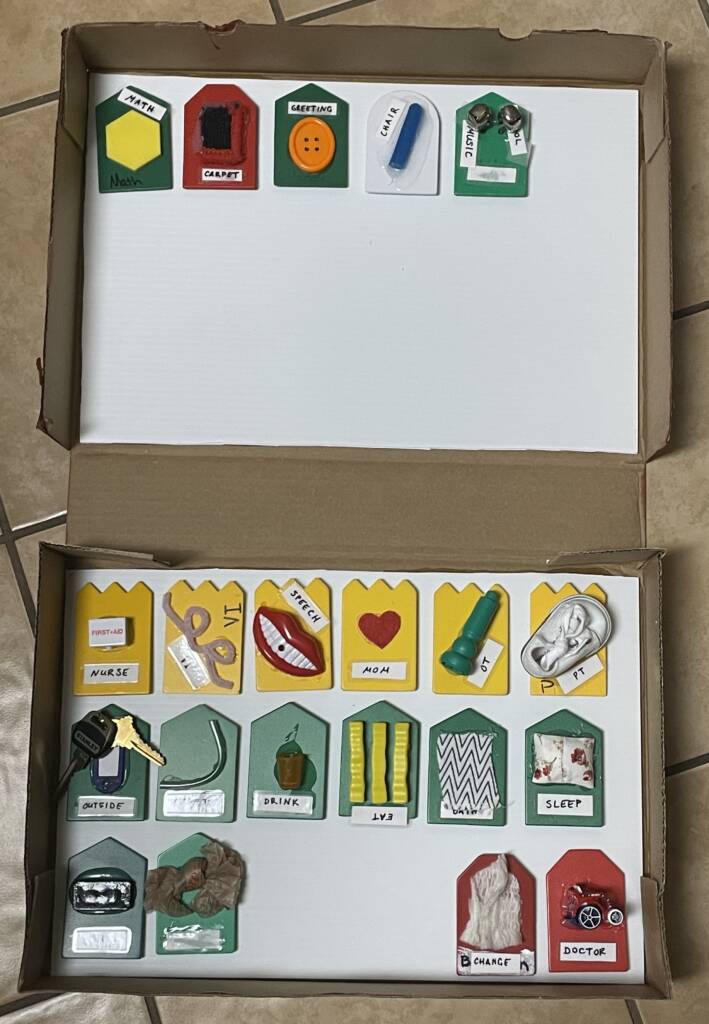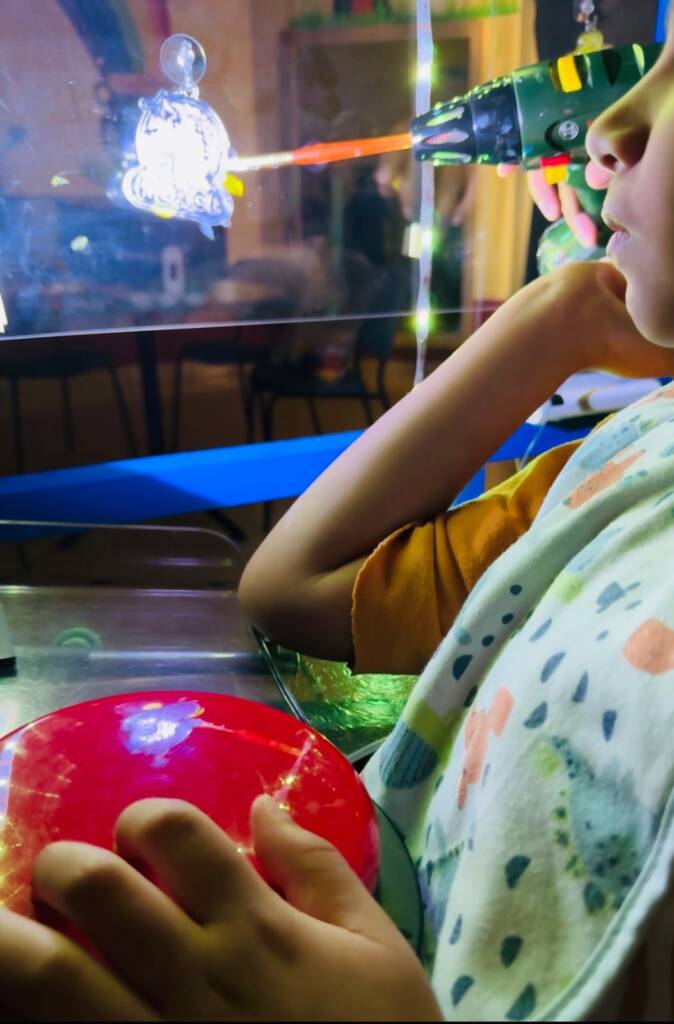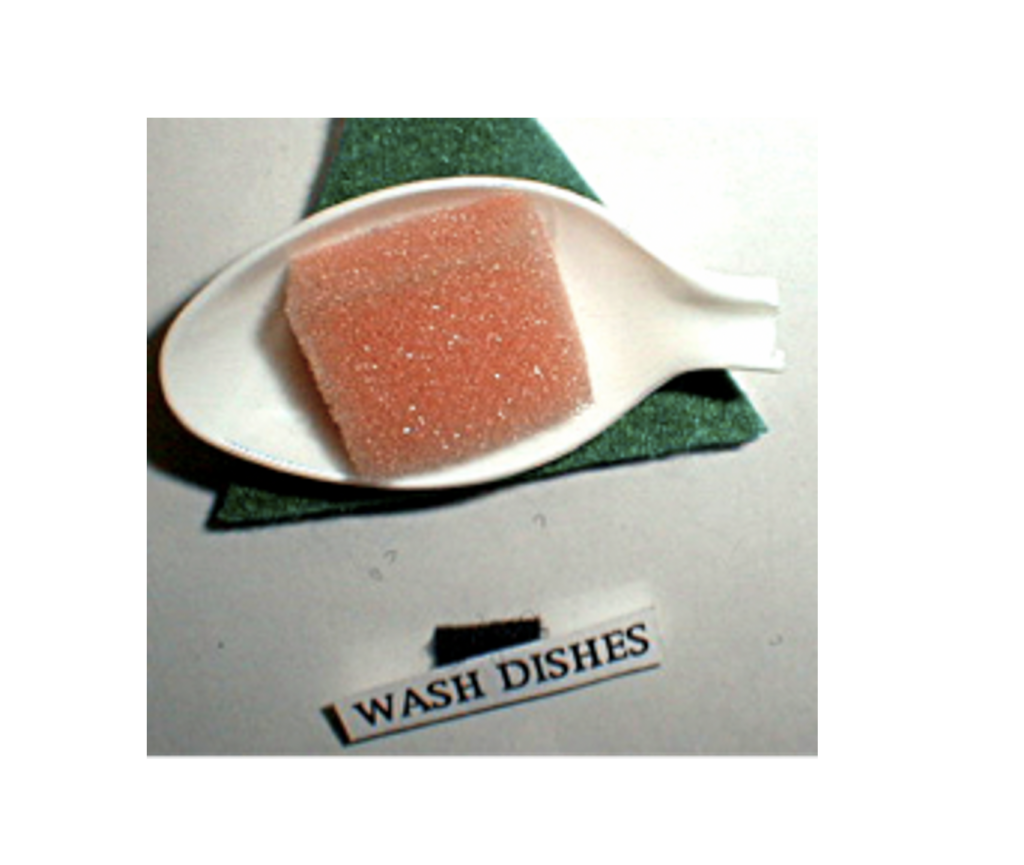Students who are visually impaired and blind may be visual, auditory or tactile learners. For many students, despite their visual impairment or legal blindness, print or large print is their primary learning media. However, some students use braille or auditory skills as their primary learning media. Some students do not have access to braille due to other challenges. These students may be auditory learners. But, as with many students who are deafblind, many are tactile learners or tactile and auditory learners.
Objects (and tactile symbols) are assigned meaning. They come to signify events or activities to the student. The object or tactile symbols come to hold the deeper meaning than just the object itself, to the student the object signifies the routine of the activity or event. This is called object literacy. Objects and tactile symbols are a tactile way for the students to understand and anticipate activities and events and order their day. A list in the form of slotted boxes with objects or ordered tactile symbols allows the student to comprehend the order that activities will occur during the student’s day once it has been prepared (ideally with the help of the student themselves). It becomes a tool that the student may access independently and —like my planner and yours—it helps the student know what will happen next. It can reduce anxiety by clarifying the future and demystifying the student’s day for that student.
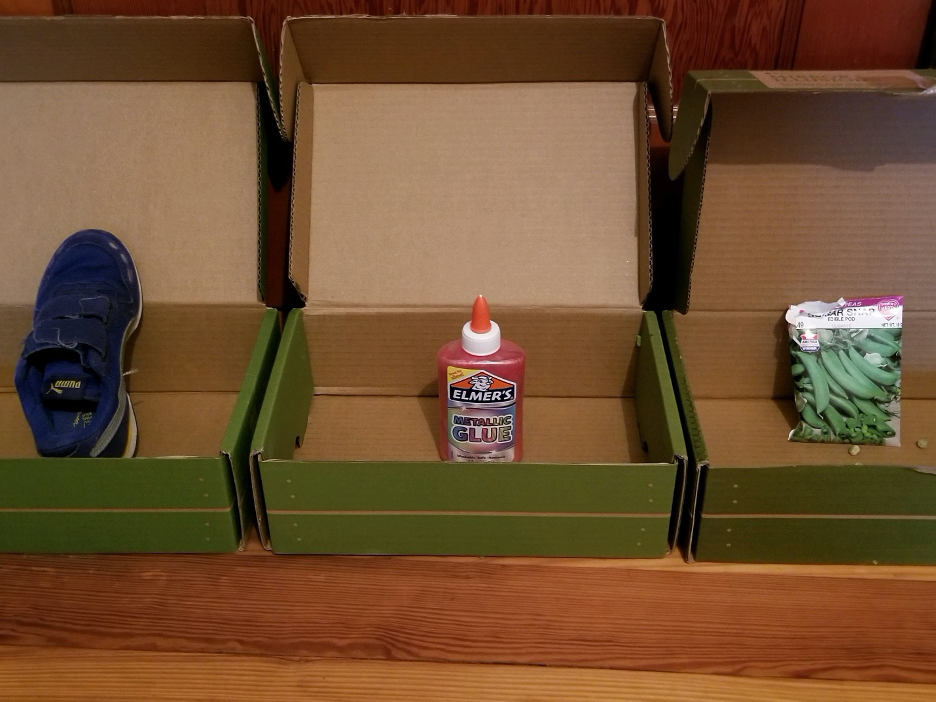
Students with visual impairments and blindness may rely on objects symbols or ordered tangible symbol schedules to help them know about upcoming events and activities in their day. This article draws attention to the different tangible attributes of object symbols and tactile symbols. Breaking this down and keeping in mind the strengths of the student will help the student to make sense of the symbols.
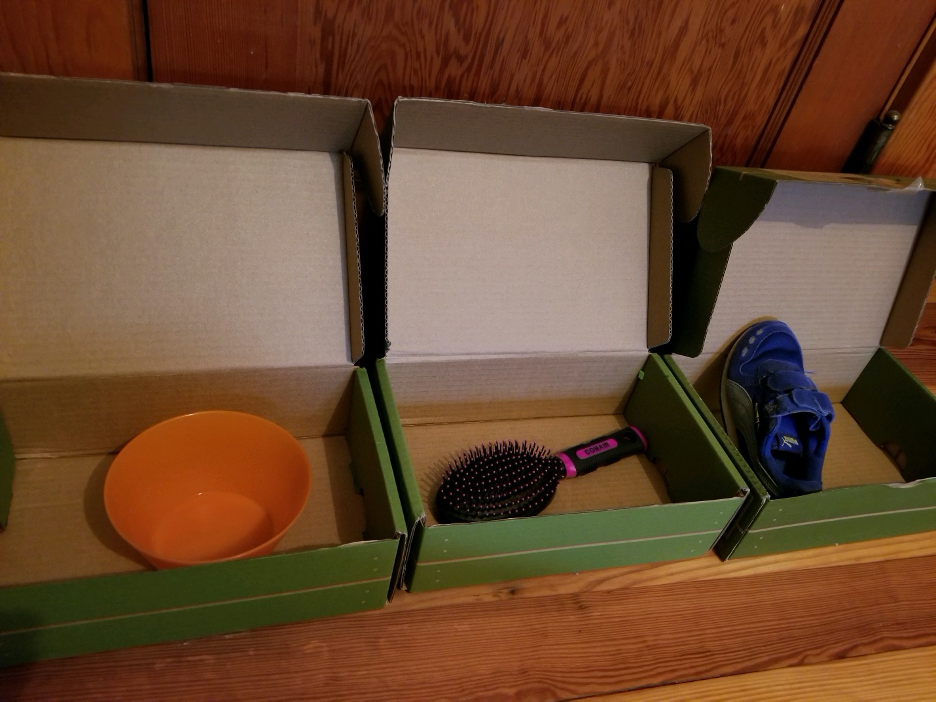
First, let’s touch on how to go from object symbols to tactile symbols.
Quick Individualized Object Symbol into Tactile Symbol Creation Summary
- Object symbols should be created from using a meaningful object for the student from the activity that is unique to the activity. The object that is chosen to represent an activity or event is easiest for the student to understand when the connection between the object and the activity is clear to the student. The object should be something that the student interacts with during the activity or the event.
- Take the object from the activity that the student has access to during the activity. It is best if this object is replaceable (and cleanable). This object can be the object symbol. Once the team is ready to move beyond a single object, the team may introduce a first/then or now/next system or calendar boxes by using a set of bins/boxes, APH’s Calendar Boxes, a Slotted Tri-wall device, etc.
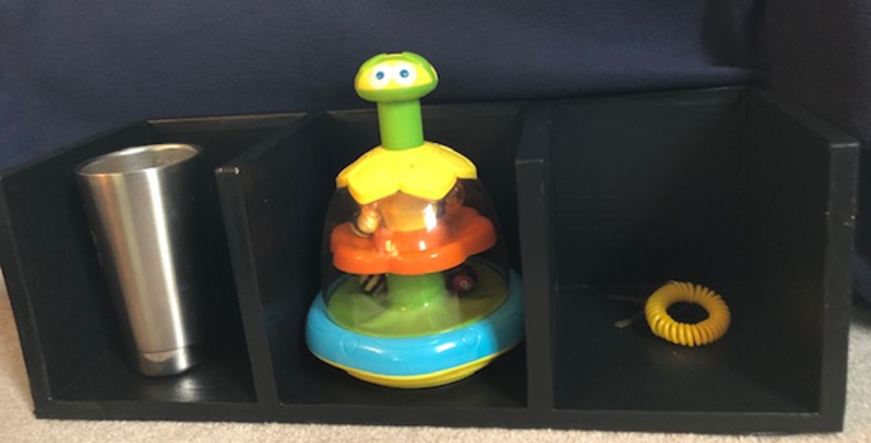
- When the student consistently demonstrates the understanding of the connection between the object and the activity and when the team is ready to introduce a tactile symbol system, the object may be cut down so that just a portion of the object is used consistently to represent the activity. Cutting the object down with the student is ideal. Using it consistently and ensuring that it is still meaningful to the student is critical.
- Cut the object down until it is a manageable size. Do this gradually (if the object started very large) ensuring that the student is consistently able to understand that the symbol still represents the activity after each clip (taking your object from the full object to a partial object symbol may take a day or months, depending on the size of the object and the understanding of the student).
- The smaller object may be mounted upon either a Tactile Connections card (APH) or tri-wall placard, or other standardized symbol card.
The strengths and challenges of each student will help determine how the symbols should be best customized. If a student has difficulty with number concepts, then creating a symbol for Wednesday with three bumps (to represent the third day of the school week) would exploit this challenge and likely be difficult for the student to master. If the student has shown consistent difficulty with discriminating form (triangles from squares—for example) stay away from objects or symbols that rely solely on type of discrimination (form in this example).
If you have many objects that are part of the activity from which to choose, go with the one that you feel that the student best associates with the activity. Below are some different characteristics of symbols that may impact the ease with which the student/child is able to identify symbols tactilely.
Tactile Attributes of Symbols
Texture—The texture of an object or tactile symbol gives input to the student. If your object has multiple textures, try to determine which texture of the object resonates with the student (in that when the student feels that texture, they are certain of the object). When cutting the object symbol down to the tactile symbol with the student, incorporate the texture of the object that helps the student determine the identity of the object. If the textures of the different symbols are distinct, it can help the student to discriminate each symbol without much tactual analyzation.
Size—The size of the object can help the student understand which activity it represents before it has been cut down. It is important to use real objects and to cut them down instead of using miniature objects that are often made from a different material than the real object. Many miniatures are hard plastic objects that only differ from each other in form. Having a single attribute that differentiates symbols may result in increased confusion for the student—making miniature symbols a struggle to learn. Avoid miniatures.
Material—The material of the object may give the student additional hints of smell, texture, and hardness which may aid discrimination.
Form—If students have had practice and are consistently successful at tactually discriminating form or shape independent of symbols—then a symbol system that relies on these distinctions may be successful. Other students may struggle to discriminate forms tactually. If the student struggles to discriminate forms, then injecting form reliant symbols into the symbol system may pose challenges to the student. Other students have difficulty understanding verbiage and concepts around form, anything from, “left and right” to “above and below.” Familiarization and exposure to positioning concepts and the language that supports them, with objects that are familiar to students across settings will help the students understand such terms when applied to symbols.
Auditory Component—Few symbols have an auditory component. However, the ones that do (may symbolize music or music class such as a piece of a maraca—that makes a rattling noise—or a bell) may allow themselves to cater to two of the student’s modalities. These symbols, either because of the distinction of having the auditory component or the fact that they do appeal to two senses often seem readily understood by students.
Weight—Some symbols are heavier or lighter, depending on the density of the material they are made with. The weight of a particular object or symbol may help a student identify that symbol.
What Is a Tactile Symbol?
Tactile symbols come from objects that are familiar to the student. The object is familiar and holds meaning. Tactile symbols are something newly created. Through cutting down the symbol, the teacher (or guardian) is helping the student to give the tactile symbol meaning and to standardize the system. Though they may visually look like a piece of the object, the tactile symbol is a new object for the student and the difference may present as a hurdle to understanding. Decreasing the number of concepts that the student needs to learn in order to associate the tactile symbol with the object (and the event or activity) will help the student to associate the certain symbol with the event or activity more readily. Direct, concrete connections between objects and the event or activity they represent will promote student understanding.
Object and tactile symbol systems may take time to create and build. Consistent use of symbols is critical. The benefits that the student receives are worth the investment of time and energy. Opening the door to object literacy creates opportunity for anticipation and communication.
